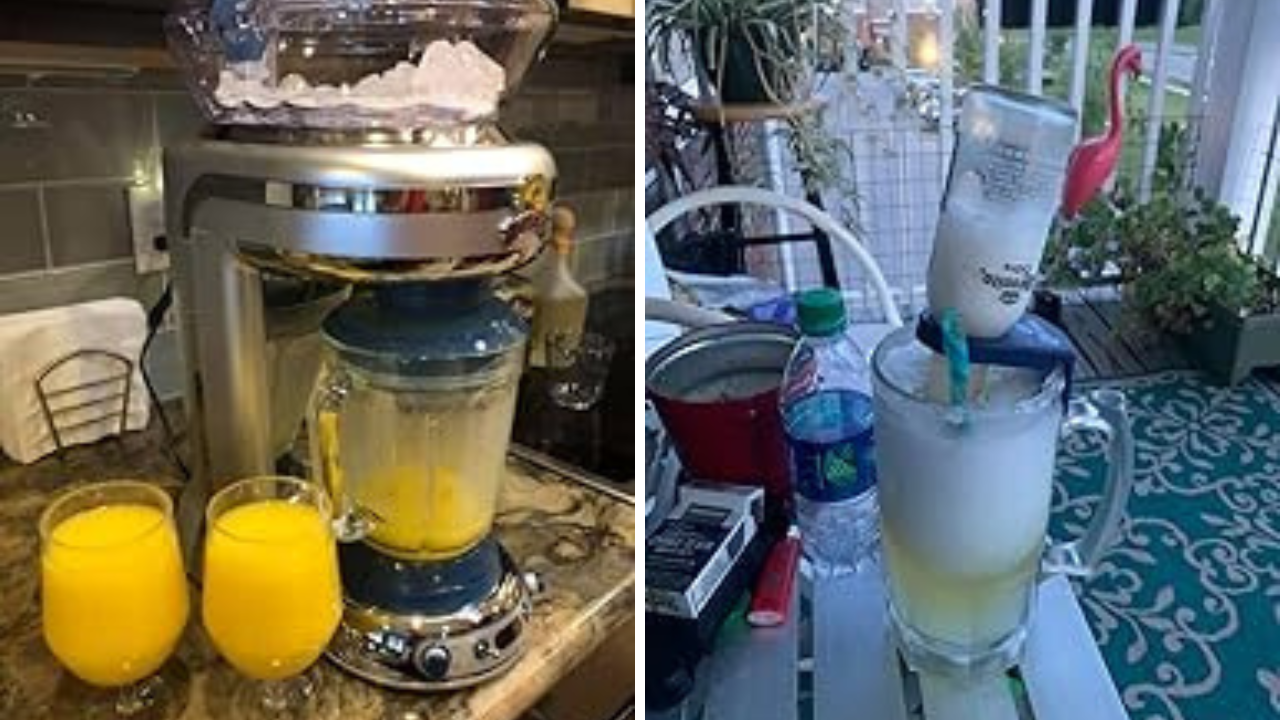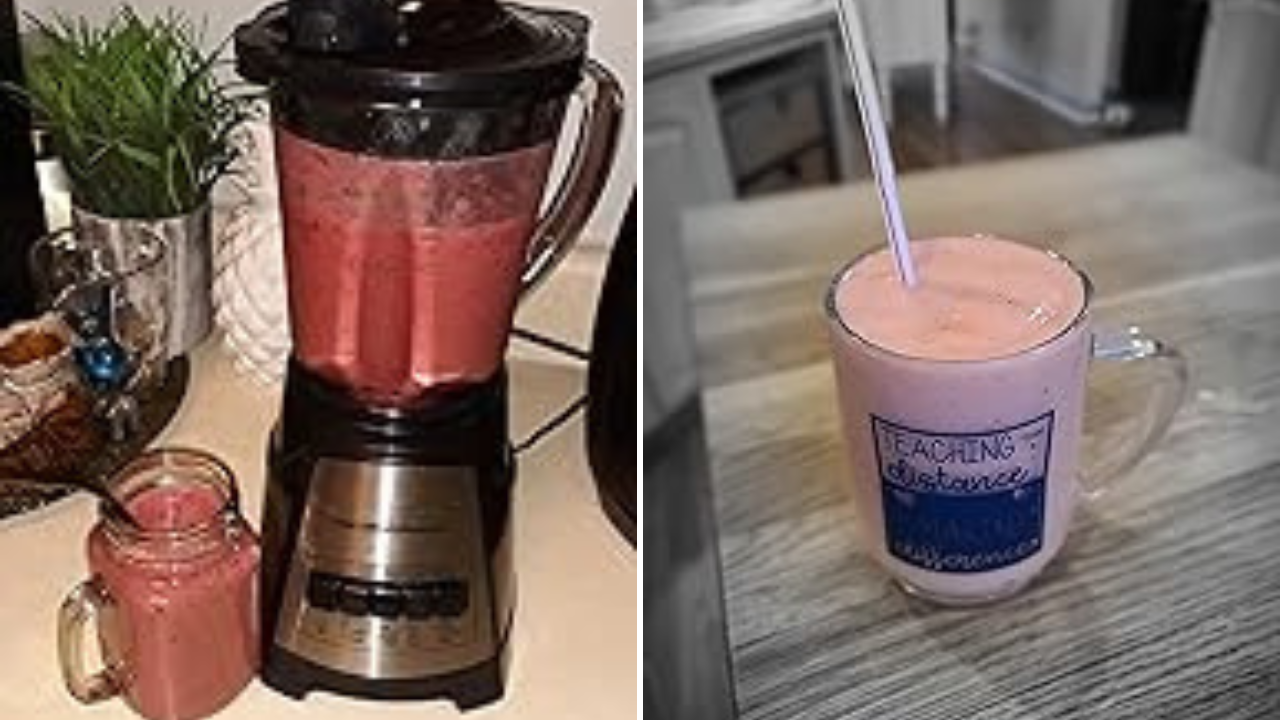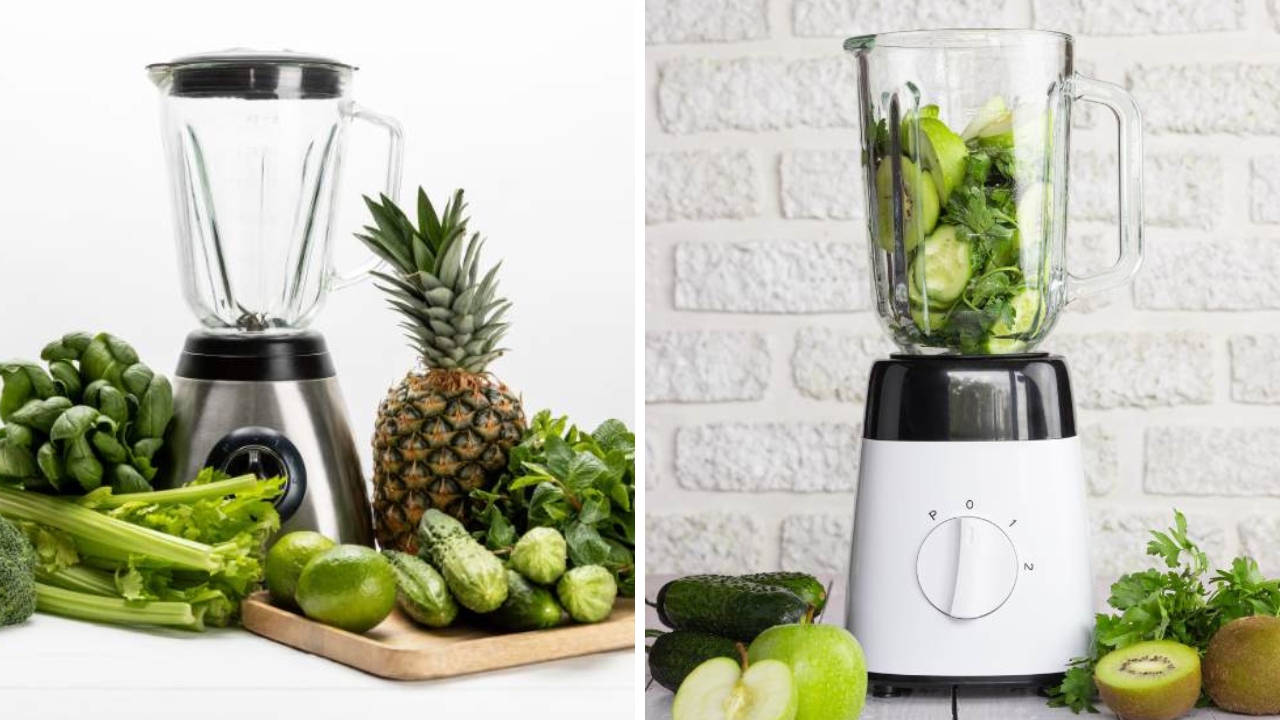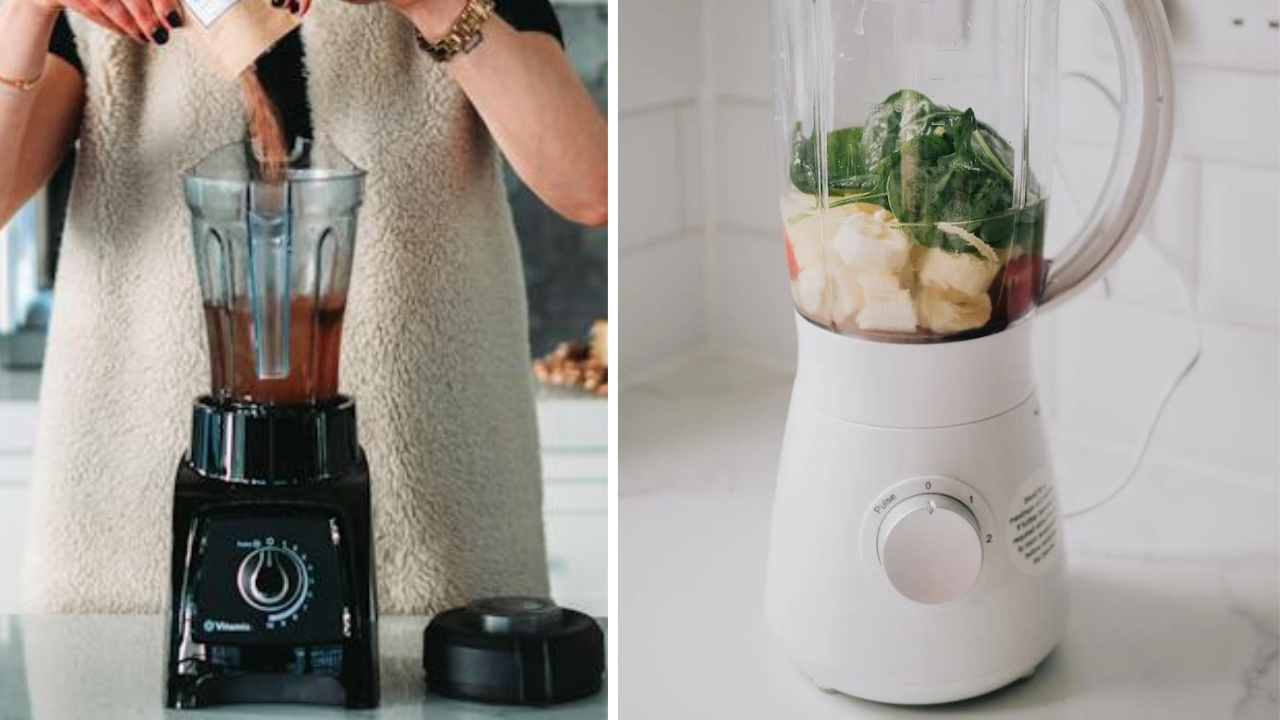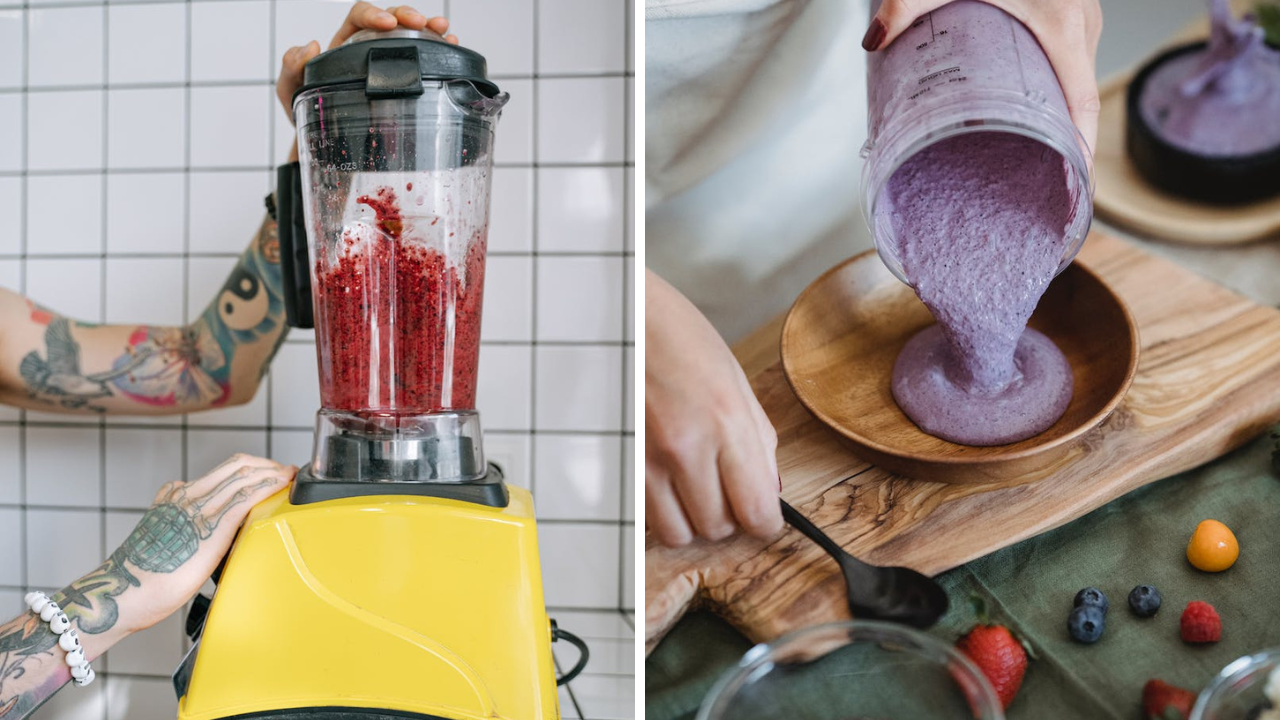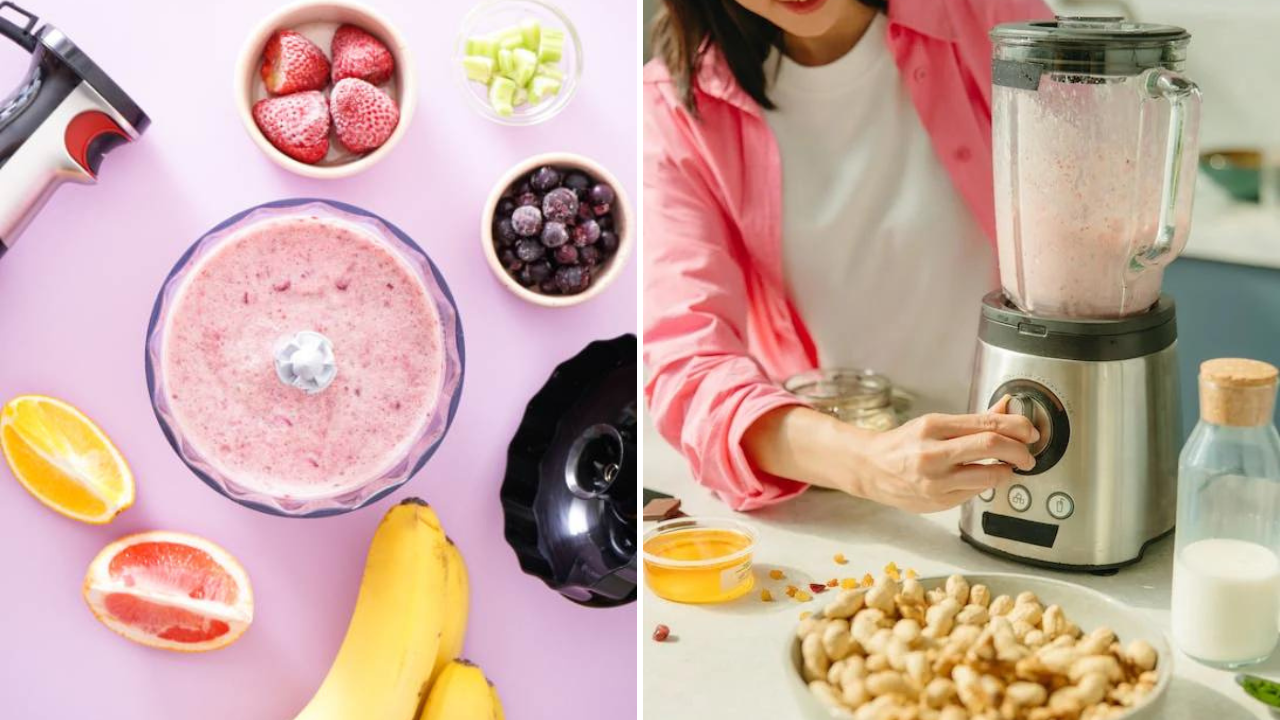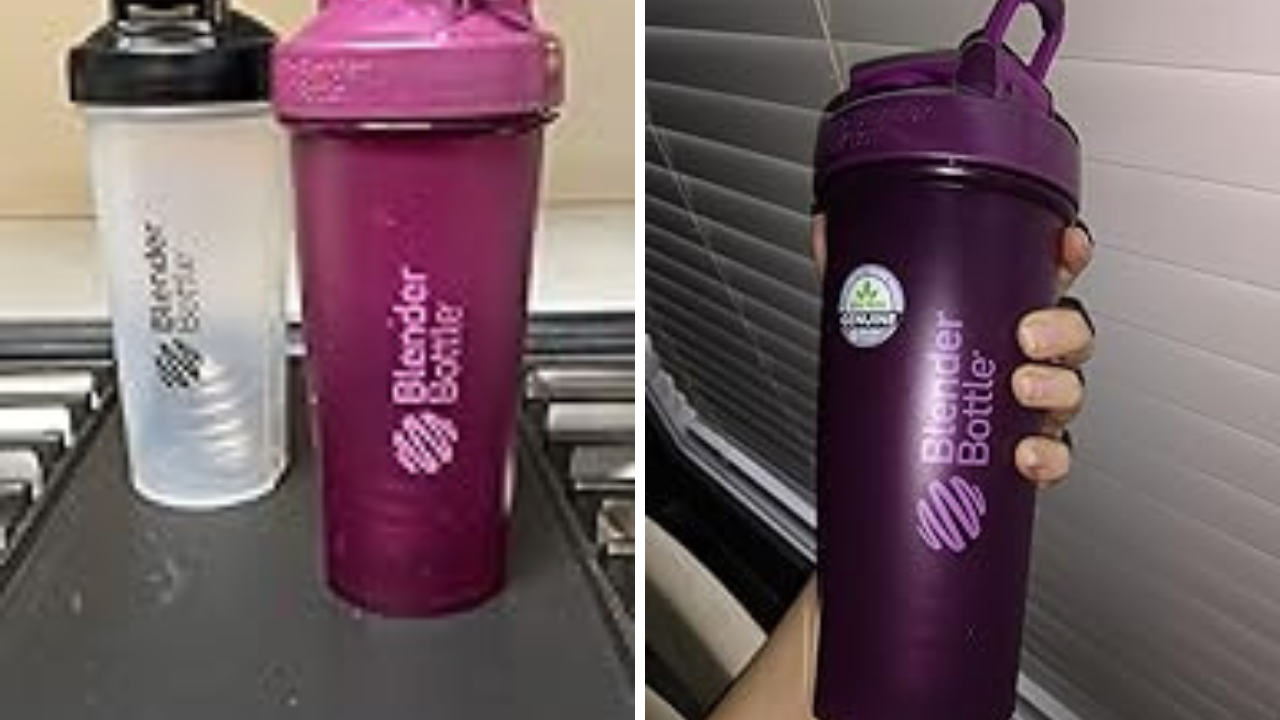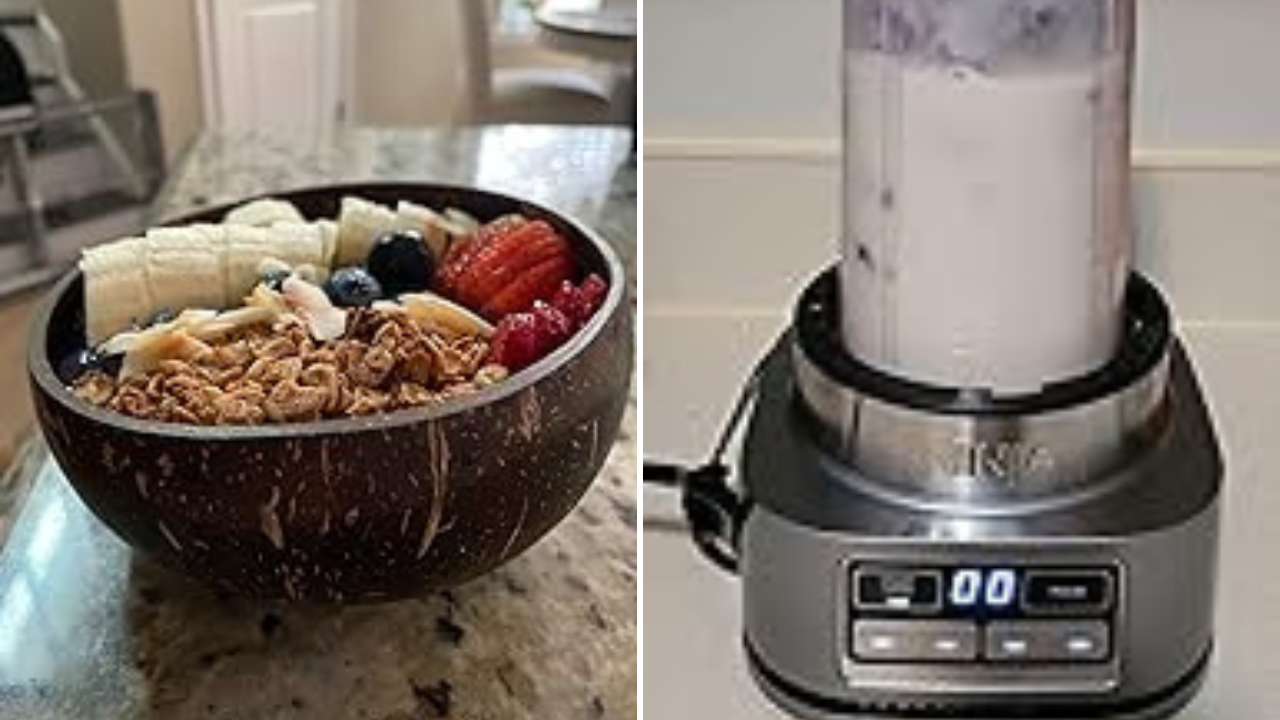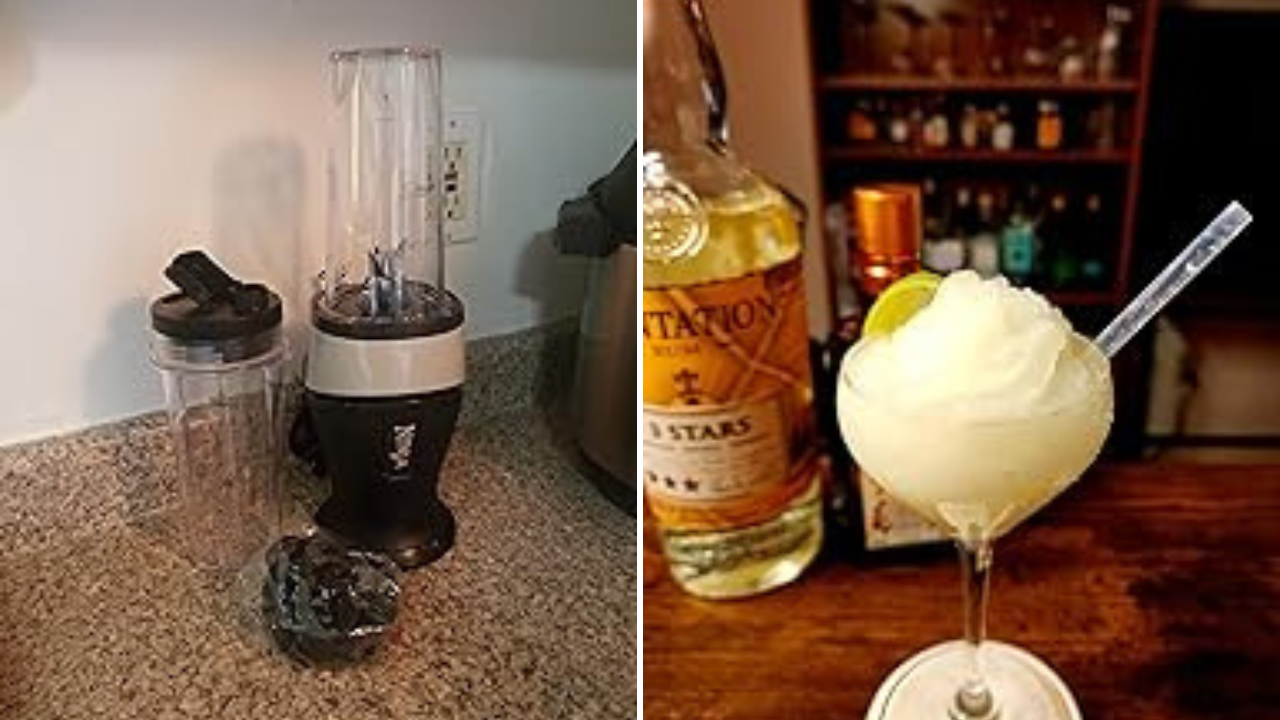A blender is a versatile kitchen appliance that is used to mix, puree, or emulsify food and liquids.
It is a must-have tool in any modern kitchen and is used to make a variety of recipes, from smoothies and milkshakes to soups and sauces. But how does a blender work?
The basics of a blender involve a motor, blades, and a container. The motor powers the blades, which are located at the bottom of the container, and spins them at high speeds to blend the contents.
The container is usually made of plastic or glass and has a lid to prevent spills.
The working mechanism of a blender is pretty straightforward.
When the motor is turned on, it rotates the blades, which in turn create a vortex that pulls the contents towards the blades.
This results in a smooth and consistent blend. However, there are different types of blenders that work differently and have different features.
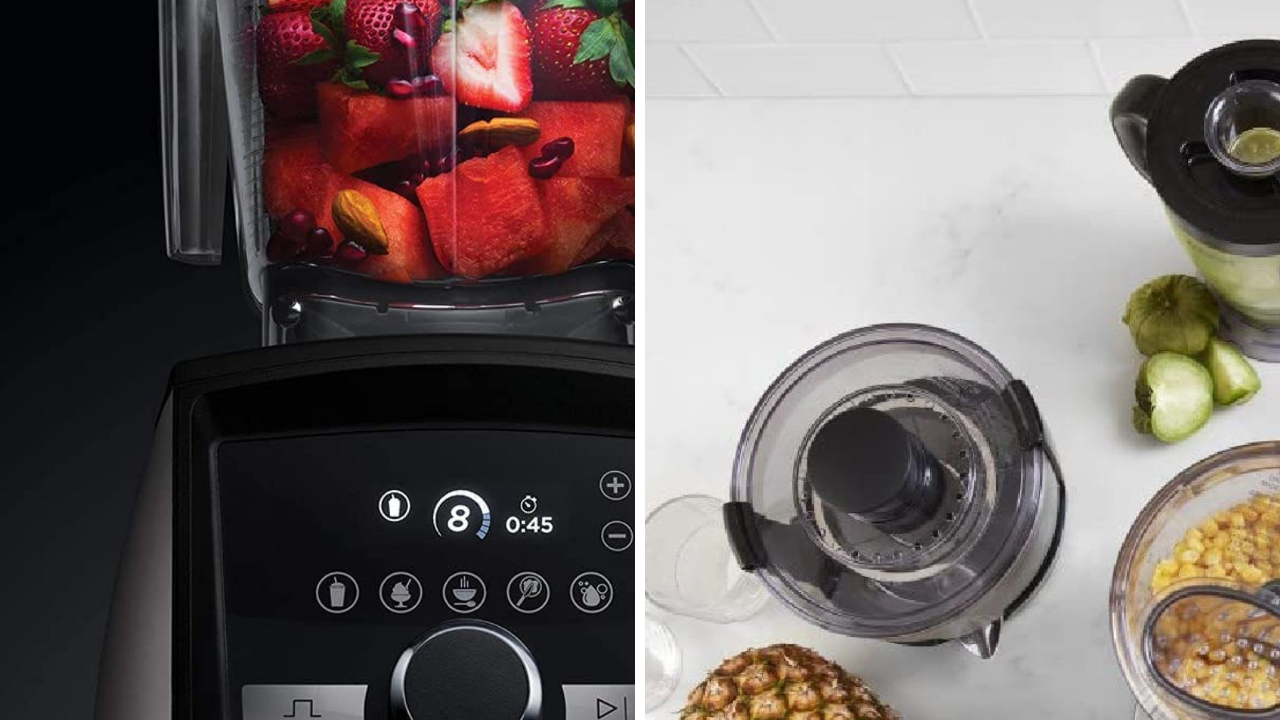
Key Takeaways
- Blenders are used to mix, puree, or emulsify food and liquids.
- The basics of a blender involve a motor, blades, and a container.
- When the motor is turned on, it rotates the blades, which in turn create a vortex that pulls the contents towards the blades.
Basics of a Blender
Blenders are versatile kitchen appliances that can be used to create a variety of recipes, from smoothies to soups.
At its core, a blender is a motorized device that uses a blade to chop, puree, or liquefy food ingredients.
The basic components of a blender include:
- Motor: The motor is the power source that drives the blade.
- Blade: The blade is the spinning component that chops, purees, or liquefies food ingredients.
- Container: The container is the vessel that holds the food ingredients.
- Lid: The lid is the cover that fits over the container and prevents food from splattering out.
When the blender is turned on, the motor spins the blade at high speeds, creating a vortex that pulls the food ingredients down towards the blade.
As the ingredients come into contact with the blade, they are chopped, pureed, or liquefied, depending on the speed and duration of blending.
Blenders typically have multiple speed settings, allowing the user to adjust the speed and duration of blending to achieve the desired consistency.
Some blenders also have special features, such as pulse settings or ice-crushing capabilities, that make them even more versatile in the kitchen.
Overall, blenders are an essential tool for any home cook or professional chef looking to create delicious and nutritious meals.
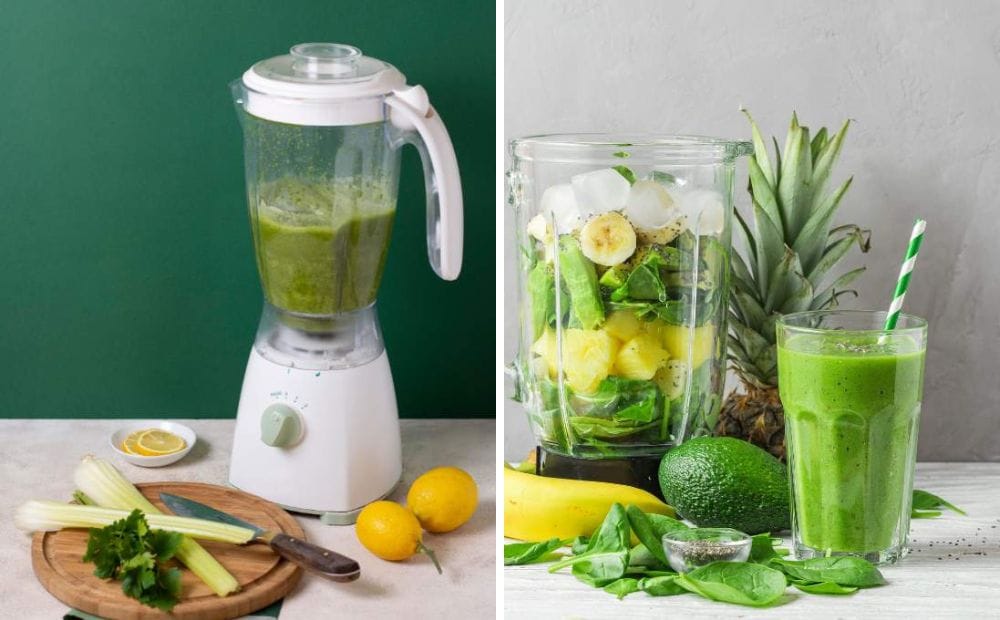
Making smoothies in a blender
Parts of a Blender
Blenders are kitchen appliances that are used to blend, puree, or emulsify food and liquids.
They consist of several parts that work together to achieve the desired result. The following are the main parts of a blender:
Motor Base
The motor base is the foundation of the blender. It houses the motor that drives the blades. The motor base is usually made of plastic or metal and contains the controls for the blender.
These controls can include power buttons, speed settings, and pulse options. The motor base also has suction cups or rubber feet to keep the blender stable during use.
Blender Jar
The blender jar is the container that holds the ingredients that need to be blended. It is usually made of glass or plastic and has a capacity of one to two liters.
The jar has a handle for easy pouring and is designed to fit securely onto the motor base. Some blender jars have measurement markings on the side for accurate measuring.
Blades
The blades are the most important part of the blender. They are responsible for chopping, blending, and pureeing the ingredients. The blades are usually made of stainless steel and are located at the bottom of the blender jar.
They can be removable or fixed, depending on the blender model. Some blender blades are designed to crush ice, while others are designed for softer foods.
Lid
The lid is the cover that fits onto the top of the blender jar. It is usually made of plastic and has a removable center cap that allows for the addition of ingredients while blending.
The lid also has a rubber gasket that creates a tight seal to prevent spills and leaks. Some blender lids have a removable measuring cup that can be used to add ingredients without removing the entire lid.
In summary, a blender consists of several parts that work together to blend, puree, or emulsify food and liquids.
The motor base houses the motor and controls, while the blender jar holds the ingredients and the blades do the blending. The lid creates a tight seal to prevent spills and leaks.
Working Mechanism
Blenders are kitchen appliances that are used to mix, puree, or emulsify food and other substances. They work by using a combination of motor power, blade motion, and blending process.
Motor and Speed Control
The motor is the primary component of a blender that drives the blade motion. It is typically a high-speed electric motor that is designed to provide enough torque to rotate the blades at high speeds.
The speed of the motor can be controlled through a variable speed control knob or through pre-set speed settings. The motor is usually housed in the base of the blender.
Blade Motion
The blades of a blender are typically made of stainless steel and are designed to rotate at high speeds.
They are mounted on a shaft that is connected to the motor. The blades are angled and shaped in a way that creates a vortex in the blender jar, which helps to mix and blend the ingredients.
Blending Process
The blending process starts when the ingredients are placed in the blender jar. The lid is then secured in place, and the motor is turned on.
As the blades rotate, they create a vortex that pulls the ingredients down towards the blades. This helps to mix and blend the ingredients until they are smooth and well-mixed.
The blending process can be adjusted by changing the speed of the motor or by using different blending settings.
Blenders are versatile kitchen appliances that can be used to make a wide range of foods and drinks.
They are easy to use and can save time and effort in the kitchen. By understanding how blenders work, users can make the most of their blender and create delicious and healthy meals and drinks.
Types of Blenders
Blenders come in different types and sizes, each with its own unique features and functionalities. Here are the three main types of blenders:
Hand Blenders
Hand blenders, also known as immersion blenders, are handheld devices that are used for blending and pureeing ingredients.
They are ideal for making soups, sauces, and smoothies. Hand blenders are compact, lightweight, and easy to operate.
They come with different attachments such as whisk, chopper, and blender, which can be interchanged depending on the task at hand.
Countertop Blenders
Countertop blenders are the most common type of blender and are designed for heavy-duty blending tasks. They are ideal for making smoothies, milkshakes, and crushing ice.
Countertop blenders come in different sizes and capacities, ranging from small personal blenders to large commercial-grade blenders.
They typically have a motorized base, a blending jar, and a lid with a removable cap for adding ingredients.
Single-Serve Blenders
Single-serve blenders, also known as personal blenders, are designed for individuals who want to make a single serving of their favorite drink or smoothie.
They are compact, lightweight, and easy to operate. Single-serve blenders come with a blending jar that doubles as a travel cup, making them ideal for people on the go. They are also easy to clean and maintain.
In summary, the type of blender you choose depends on your blending needs, budget, and lifestyle.
Hand blenders are ideal for small blending tasks, countertop blenders are suitable for heavy-duty blending tasks, and single-serve blenders are perfect for individuals who want to make a single serving of their favorite drink or smoothie.
Safety Features
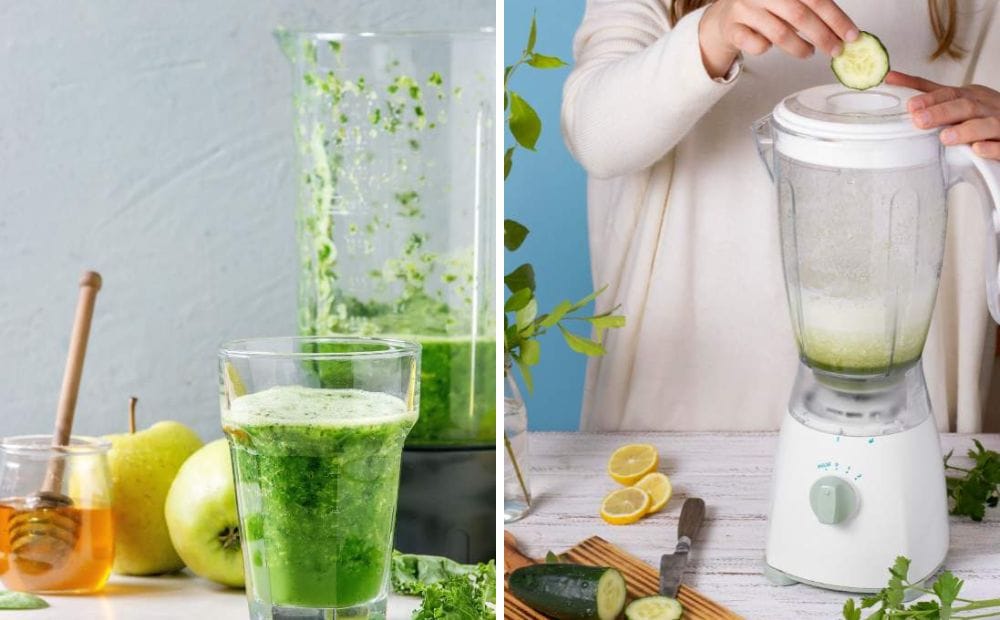
Blending smoothies
Blenders are powerful kitchen appliances that can be dangerous if not used properly.
That's why most blenders come with safety features that help prevent accidents. In this section, we will discuss two common safety features found in blenders: overload protection and safety lock.
Overload Protection
Overload protection is a safety feature that prevents the blender from overheating and burning out the motor.
When the blender is overloaded, the motor can overheat and cause damage to the blender. Overload protection is designed to detect when the blender is overloaded and shut off the motor before it gets too hot.
Blenders with overload protection have a built-in sensor that can detect when the motor is working too hard.
When the sensor detects that the motor is overloaded, it will automatically shut off the motor to prevent damage. This feature can save you a lot of money by preventing the need for costly repairs or replacements.
Safety Lock
The safety lock is another common safety feature found in blenders. The safety lock prevents the blender from turning on accidentally, which can be dangerous.
The safety lock is usually located on the base of the blender and must be engaged before the blender can be turned on.
To engage the safety lock, the blender jar must be securely attached to the base and the lid must be properly locked in place.
Once the safety lock is engaged, the blender will not turn on until the user presses the power button. This feature helps prevent accidental injuries, especially when children are around.
In summary, overload protection and safety lock are two common safety features found in blenders.
These features help prevent accidents and protect the user from harm. When shopping for a blender, make sure to look for models that have these safety features.
Maintenance and Cleaning
Blenders are easy to maintain and clean. Regular cleaning is necessary to ensure that the blender remains in good working condition.
Deep cleaning is required when the blender has not been cleaned for an extended period or when it has been used to blend tough ingredients.
Regular Cleaning
To clean the blender after use, follow these steps:
- Unplug the blender from the power source and disassemble the blender jar and blade assembly.
- Wash the jar and blade assembly in warm soapy water.
- Use a soft brush to remove any leftover food particles from the blades.
- Rinse the jar and blade assembly thoroughly with clean water.
- Wipe the motor base with a damp cloth.
Deep Cleaning
Deep cleaning should be done at least once a month or when the blender has been used to blend tough ingredients. To deep clean the blender, follow these steps:
- Disassemble the blender jar and blade assembly.
- Fill the jar with warm water and add a few drops of dish soap.
- Place the blade assembly in the jar and blend on the highest speed for 30 seconds.
- Pour out the soapy water and rinse the jar and blade assembly thoroughly with clean water.
- Use a soft brush to remove any leftover food particles from the blades.
- Wipe the motor base with a damp cloth.
It is important to note that the motor base should never be submerged in water. If the motor base needs cleaning, wipe it with a damp cloth.
Regular cleaning and deep cleaning will ensure that the blender remains in good working condition and extends its lifespan.
Common Problems and Solutions
Blenders are relatively simple appliances, but they can still encounter problems. Here are some common issues and their solutions.
Leaking Blender
If your blender is leaking, it could be due to a few reasons. First, check that the blender jar is properly screwed onto the base.
If it is, then check the gasket or sealing ring. Over time, these can become worn or damaged, causing leaks. Replace the gasket if necessary.
Another reason for a leaking blender could be that the blade assembly is not properly attached to the jar. Make sure the blade assembly is tightly screwed onto the bottom of the jar.
Motor Issues
If your blender's motor is not working properly, it could be due to a few reasons. First, check that the blender is properly plugged in and that the outlet is working.
If it is, then check the fuse or circuit breaker. If the fuse has blown or the circuit breaker has tripped, reset it.
Another reason for motor issues could be that the motor has overheated. If this happens, unplug the blender and let it cool down for a few minutes before using it again. If the motor continues to overheat, it may need to be replaced.
Blade Problems
If your blender's blades are not spinning or are spinning slowly, it could be due to a few reasons.
First, check that there is nothing blocking the blades. If there is, unplug the blender and remove the obstruction.
Another reason for blade problems could be that the blades are dull or damaged. If this is the case, replace the blades.
In summary, the most common problems with blenders are leaking, motor issues, and blade problems. By following the solutions outlined above, you can troubleshoot and fix these issues yourself.
Frequently Asked Questions
What are the different types of blenders?
There are several types of blenders available in the market, including immersion blenders, countertop blenders, personal blenders, and high-performance blenders. Each type has its own unique features and functions.
What are the parts of a blender and their functions?
The main parts of a blender include the base, motor, blades, jar, lid, and control panel. The base contains the motor, which powers the blades. The blades are responsible for blending the ingredients, while the jar and lid hold the ingredients in place during the blending process. The control panel allows the user to adjust the speed and other settings.
How does the motor of a blender work?
The motor of a blender works by converting electrical energy into mechanical energy, which powers the blades. The motor is usually located in the base of the blender and is connected to the blades through a shaft.
What are the internal parts of a blender?
The internal parts of a blender include the motor, blades, bearings, and couplings. The motor is responsible for powering the blades, while the bearings and couplings help to keep the blades in place and prevent them from wobbling.
Can you explain the step-by-step process of how a blender works?
First, the ingredients are placed in the jar of the blender. The lid is then secured in place, and the jar is placed on the base of the blender. The user then selects the desired speed and other settings on the control panel. The motor of the blender is activated, which powers the blades. The blades then rotate and blend the ingredients together until they reach the desired consistency.
What is the physics behind how a blender works?
The physics behind how a blender works involves the transfer of energy from the motor to the blades. The motor converts electrical energy into mechanical energy, which is then transferred to the blades. The blades then use this energy to create a vortex, which pulls the ingredients down towards the blades and blends them together.
If your blender has worn out and you need a new quality blender, check out the blog post below for our top picks of different types of blenders:
